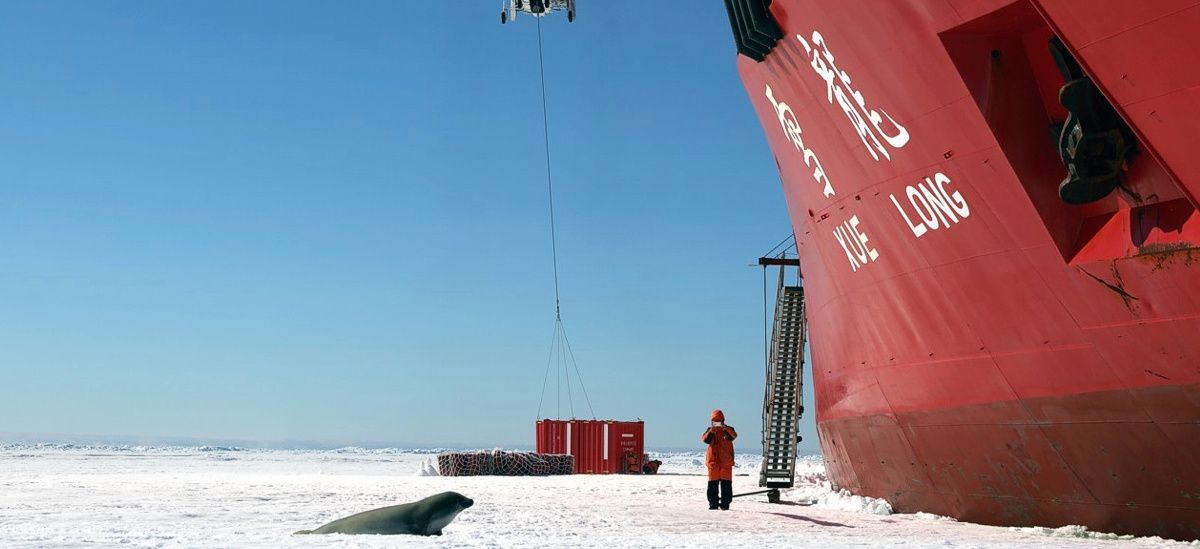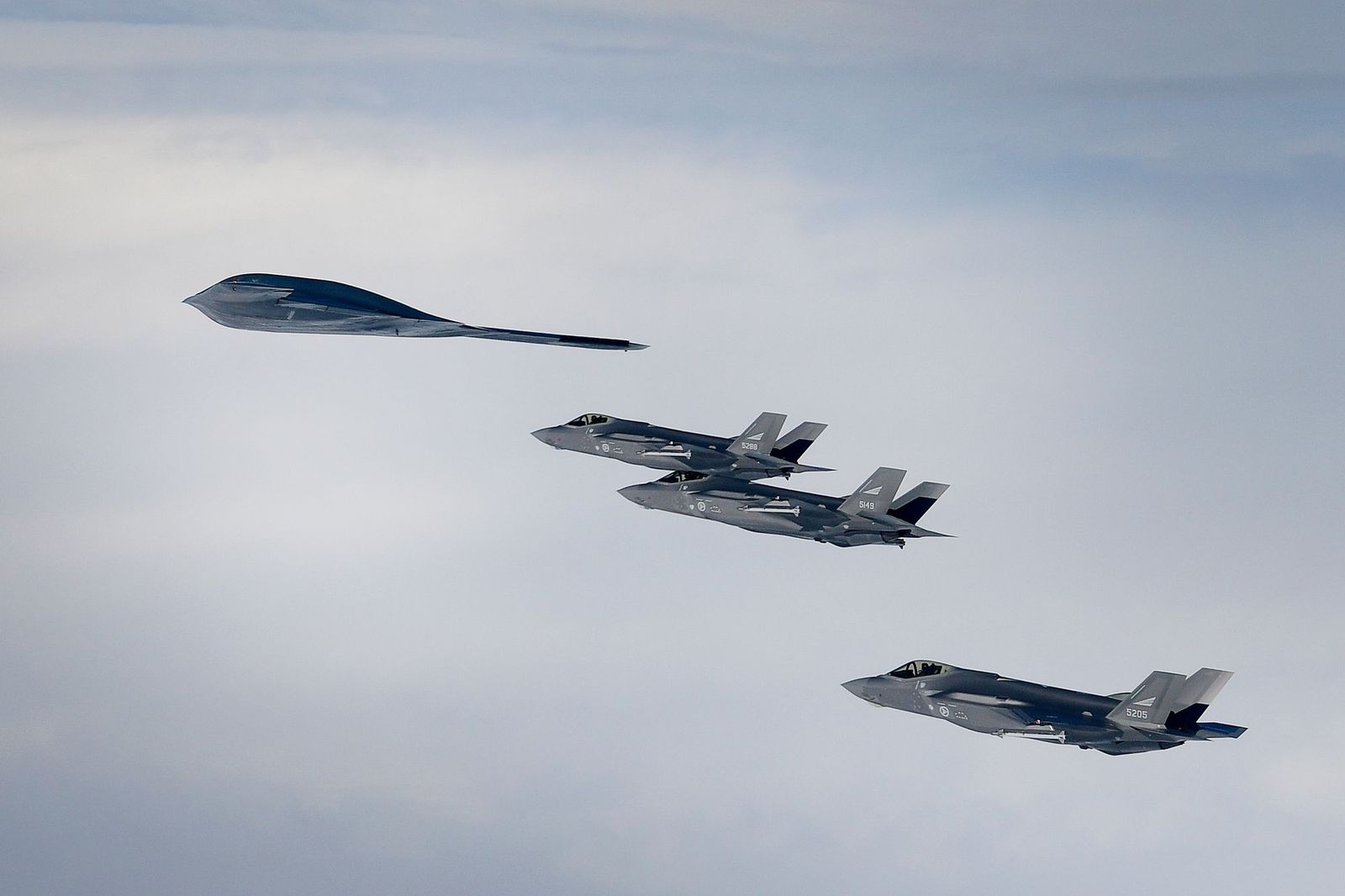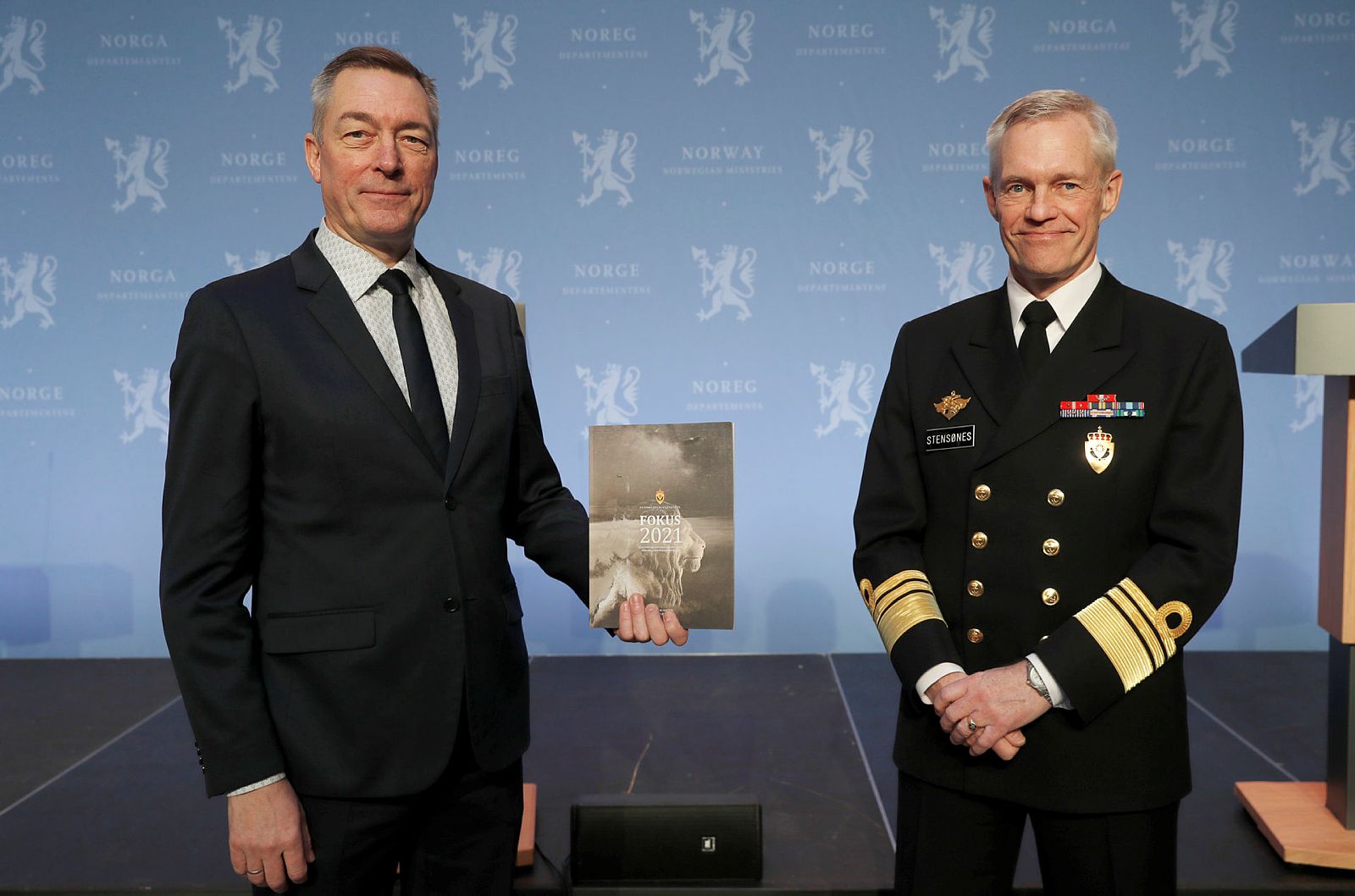Over the past year, the Arctic has been receiving a series of unpleasant wake-up calls about security in the region. Following more than twenty years of the Far North being widely viewed as disconnected from "traditional" hard strategic concerns, the question of whether the Arctic might be viewed as an arena for military competition has reappeared. For the past couple of decades, the Arctic had been viewed as an area of "high north, low tension". The watershed speech by the last president of the Soviet Union, Mikhail Gorbachev, in Murmansk in 1987, had called for peacebuilding measures to lessen strategic tensions in the Arctic. And in 1996, the then newly created Arctic Council decided to leave security affairs off its agenda in the organisation's founding document.
Within the Arctic Council, its eight members — Canada, Denmark, Finland, Iceland, Norway, Sweden, Russia and the United States — sought to promote the Arctic as a zone of cooperation and joint problem-solving, while recognising the distinct geography, demographics and economics of the Far North. Despite a cooling of relations between Russia and the United States since the start of the conflict in Ukraine in 2014, a tacit agreement among the membership cordoned off non-Arctic political and security concerns from the Council's deliberations and overall Arctic diplomacy.
This situation has shifted abruptly, however, due to two major factors. The first is the more visible overspill of conflicting great power policies, especially between Russia and the United States, into the Arctic as both countries recognise the region is more central to their strategic interests. The second is the growing attention paid by non-Arctic states to Arctic affairs, especially as the Far North welcomes greater economic activity. While China may be leading this process, other non-Arctic governments have also sought to develop more robust Arctic policy interests. These include Japan, Singapore, South Korea and several European actors — France, Germany, Italy, the Netherlands, Poland and the United Kingdom — as well as the European Union as a whole. As a result, the Arctic has increasingly been moving away from the international strategic periphery, raising the question of the degree to which the Arctic should be considered an international security concern as opposed to a regional one.

Environmental and Economic Issues
"Security" in the Arctic has traditionally been discussed within non-military frameworks. The most pressing issue has been the region's susceptibility to climate change, including the erosion of polar ice and altered weather conditions, with the associated impact on local-level socioeconomic affairs and indigenous persons. The landmark 2018 report by the Intergovernmental Panel on Climate Change — which described the global impact of the planet's temperature rising by 1.5°C in the coming years — pointed specifically to the Arctic being most affected, and many discussions about Arctic development have used climate change as a focal point.
Other economic and environmental security issues have appeared on the Arctic agenda in recent years as the region becomes more accessible to shipping and extractive industries, including fossil fuels, mining and fishing.
As once-dormant sea routes in the Arctic Ocean become ice-free for longer periods of time, maritime security concerns including search and rescue, incidents at sea, and codes of conduct for regional sea-lane transit have been subject to debates and subsequent agreements. Foremost among these has been the 2017 Polar Code, which seeks to regulate civilian ship transit both in the Arctic and in the waters off Antarctica. Addressing the concerns about overfishing in the region as more open water becomes reachable, a fishing ban in the Central Arctic Ocean commenced in October 2018 with the support of the European Union, Russia and the United States as well as Canada, China, Iceland, Japan, Norway and South Korea.
Currently, drilling for fossil fuels in the Arctic has not taken place on a major scale, due to comparatively low world energy prices during the last five years. However, some noteworthy projects have been spearheaded by Russia, including the Yamal liquefied natural gas (LNG) initiative, supported by Chinese and French interests, as well as emerging spinoff enterprises. The U.S. government's attempts to open northern Alaska to offshore oil drilling, despite environmental and legal concerns, have so far been unsuccessful. Over the past decade, many warnings have been raised about an "Arctic scramble", as numerous countries sought to enter the region in search of more easily obtainable resources, but a fully developed economic competition has yet to take place. This is due not only to lower energy prices since 2014, but also to the fact that many of said resources lie uncontested, well within the lands and waters of the Arctic states.
Beyond the exclusive economic zones of the Arctic Ocean littoral states, there have been some disagreements about maritime boundaries and, for a time, these added to speculation that the region was going to be subject to contests over economic and political sovereignty. The now infamous incident in 2007, when a metal Russian flag was placed under the ice near the North Pole by a Russian submarine, was arguably the catalyst for this ongoing speculation. Nonetheless, many disagreements over Arctic maritime boundaries have either been resolved or continue to be quietly negotiated. A potentially thorny maritime border dispute between Norway and Russia in the Barents Sea was defused by a 2010 agreement. The contested status of Hans Island (Tartupaluk in Greenlandic) has so far eluded a similar resolution but talks between Canada and Denmark over its eventual political status continue.
A potentially more complicated disagreement involves the North Pole itself, and more specifically the competing claims to the underwater Lomonosov Ridge, which extends well into the Central Arctic including the North Pole. The ridge's area is claimed by Canada, Denmark (via Greenland) and Russia, which have all asserted the region is part of their respective continental shelves. All three governments have submitted updated claims to the United Nations Commission on Limits of the Continental Shelf, with Ottawa being the latest to do so in May of this year. The resolution of the dispute may have profound effects on the balance of economic and perhaps even strategic power in the Arctic but, again, this competition has been wholly relegated to diplomatic circles and may also ultimately be decided by bilateral agreements, along similar lines to the resolution the Norway-Russia dispute in the Barents Sea.

The Reintroduction of Military Concerns
The reintroduction of military concerns in the Arctic came about, to borrow a quote from Ernest Hemingway, in two ways: "gradually, then suddenly". The "gradual" aspect is based on the steady reintroduction of army, navy and air force elements into the region by major Arctic players. Russia under President Vladimir Putin has moved to develop the Arctic as a major component of efforts to boost the Russian economy, which is feeling the brunt of Western sanctions and economic isolation in the wake of the illegal annexation of Crimea in 2014. Moscow is optimistic about the potential for Siberia and the Russian Far East to provide major boosts to the country's economy via the energy projects, the opening of the Northern Sea Route for faster Asia-Europe maritime shipping, and the associated building of ports and infrastructure to support Arctic sea trade. This has indicated Russia is also seeking to protect Arctic assets in ways which began to catch the attention of the United States and its northern European allies.
Previously abandoned Cold War-era military installations have been reopened and incursions by Russian aircraft and submarines into or close to other countries' Arctic spaces have become more frequent. (There was even a bizarre case in May of this year of a beluga whale, wearing a Russian-made harness, being captured off the northern coast of Norway which, allegedly, may have been dispatched for spying purposes.) The most recent largescale exercises by the Russian military, Vostok 2018, included operations throughout Siberia and the Russian Far East; and Moscow has increased trans-Arctic radar coverage and developed systems for radio-electronic jamming of foreign aircraft and vessels.
The United States and NATO Allies had been responding to these activities on many fronts. These include improvements to the U.S. Navy's Second Fleet, such as developing the means to operate more visibly in the Arctic; the renovating and making use of facilities in Keflavik, Iceland, by the United States after American forces had withdrawn in 2006; and long-delayed plans being finalised for the construction of new icebreakers to replace the two aging vessels still in operation by the U.S. Coast Guard. In comparison, Russia currently has more than forty functioning icebreakers, including nuclear-powered ships. In April this year, the latest such nuclear-powered vessel, the Ural, was formally launched in St Petersburg.
By far the most visible sign that Washington had begun to view the Arctic through a military lens — adding greatly to the "sudden" aspect of the emergence of hard security concerns in the region — was illustrated by United States Secretary of State Mike Pompeo's speech at the Arctic Council's Ministerial meeting in Rovaniemi, Finland, in May this year. His remarks pointed to other Arctic actors as military threats and suggested that Russian claims to the Northern Sea Route and Canadian sovereignty over the Northwest Passage (which Washington views as international waters) were "illegitimate". Moreover, his speech omitted any mention of climate change and, at the end of the meeting, the Council was unable to release an official declaration because the United States delegation would not support any statement from the gathering which made reference to climate change.
Another notable aspect about Secretary Pompeo's speech in relation to Arctic security concerns was that his presentation not only singled out Russia and Canada for criticism, but also China, which despite not being an Arctic state has significantly augmented its Arctic policies in the areas of scientific diplomacy and economic cooperation over the past decade. Mr Pompeo sharply criticised Beijing for expanding its Arctic interests, despite, as noted above, several other non-Arctic states, including U.S. allies, having done the same. He also implied that China was seeking to develop strategies in the Arctic Ocean which were similar to those in place regarding the South China Sea, despite the two cases having dramatically different political and legal frameworks.
American government statements published earlier this year — including an April 2019 policy paper by the U.S. Coast Guard and the annual report on China's military activity by the U.S. Department of Defense released the following month — also sought to paint Beijing as an Arctic spoiler, including by suggesting that China's scientific interests in the region may lead to overt Arctic military strategies, including submarine deployments. The United States (as well as Denmark) has also been anxious about China's expanding economic interests in Greenland, including in mining and potential infrastructure investment. China has also announced its intention to build a nuclear-powered icebreaker (the country currently has two conventional icebreaking ships capable of Arctic operations) and that technology could in theory be transferred to military vessels.
Attempting to leverage China out of the Arctic may be moot, given that Beijing has already established strong ties with other Arctic states, including Russia, but also in the Nordic region. Moreover, Beijing is now in a position to affect much emerging Arctic policy given its size and economic strength. Immediately following the Arctic Council meeting in Finland, an Arctic Circle forum was held in Shanghai in which Chinese Arctic achievements in research and investments were highlighted, including as part of the Belt and Road Initiative, which formally added the Arctic in 2017. Descriptions of an "Ice Silk Road" were further elucidated in Beijing's January 2018 White Paper on Arctic policy. At the Shanghai meeting, it was also hinted that China was interested in spearheading new organisations in the Arctic — a further sign that the country, while stressing that it is not seeking to challenge the current state of Arctic governance, is not going to accept being marginalised in the region either.
Both Russia and the United States are continuing to show signs of hardening their Arctic strategies. The Putin government has announced new stipulations on the use of the Northern Sea Route by foreign vessels, including mandatory 45-day notifications and the transfer of information on ships and their cargo to Russian authorities. These rules have been denigrated by American officials, with one U.S. Admiral responding to these policy changes by stating that the Arctic was "nobody's lake".
The United States, meanwhile, is hoping to conduct "freedom of navigation operations" in the Arctic this summer, despite the considerable logistical challenges involved and likely opposition from both Canada and Russia. This month, the U.S. Department of Defense released an updated Arctic strategy report, reiterating the challenges which China and Russia present to security in the region, including concerns that Beijing may seek to influence Arctic governance via its economic power.
The paper confirmed that the United States should build greater awareness of Arctic challenges, enhance operations in the region, including conducting exercises and coldweather training, and strengthen the Arctic's "rules-based order".
The Arctic is now facing a potential "revenge of Realpolitik" in regards to regional security, as the strategic concerns of both major Arctic players, Russia and the United States, along with those of large non-Arctic states such as China, are starting to enter the region with much more regularity. As the Far North continues to be a source of international focus due to threats of climate change, those security concerns may now have to share figurative space with classical power politics, as the region continues to move away from the strategic periphery and towards an uncertain mainstream in emerging global strategic discourses.
Foto: Isbryteren Xue Long (Snow Dragon) i arktis i 2012
Artikkelen er først publisert i NATO JWC Three Swords Magazine







